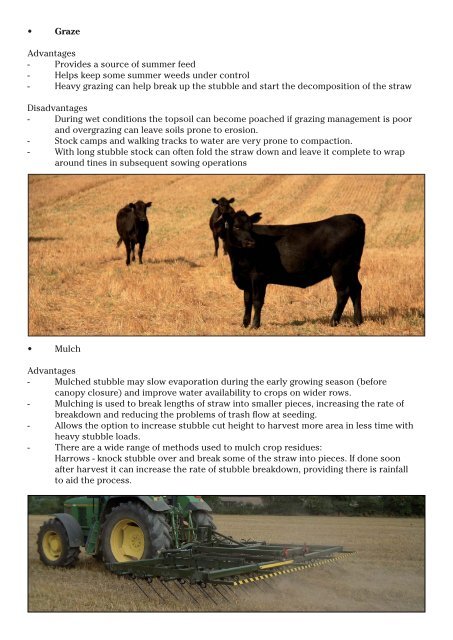Managing Stubble - Grains Research & Development Corporation
Managing Stubble - Grains Research & Development Corporation
Managing Stubble - Grains Research & Development Corporation
Create successful ePaper yourself
Turn your PDF publications into a flip-book with our unique Google optimized e-Paper software.
• Graze<br />
Advantages<br />
- Provides a source of summer feed<br />
- Helps keep some summer weeds under control<br />
- Heavy grazing can help break up the stubble and start the decomposition of the straw<br />
Disadvantages<br />
- During wet conditions the topsoil can become poached if grazing management is poor<br />
and overgrazing can leave soils prone to erosion.<br />
- Stock camps and walking tracks to water are very prone to compaction.<br />
- With long stubble stock can often fold the straw down and leave it complete to wrap<br />
around tines in subsequent sowing operations<br />
• Mulch<br />
Advantages<br />
- Mulched stubble may slow evaporation during the early growing season (before<br />
canopy closure) and improve water availability to crops on wider rows.<br />
- Mulching is used to break lengths of straw into smaller pieces, increasing the rate of<br />
breakdown and reducing the problems of trash flow at seeding.<br />
- Allows the option to increase stubble cut height to harvest more area in less time with<br />
heavy stubble loads.<br />
- There are a wide range of methods used to mulch crop residues:<br />
Harrows - knock stubble over and break some of the straw into pieces. If done soon<br />
after harvest it can increase the rate of stubble breakdown, providing there is rainfall<br />
to aid the process.

















